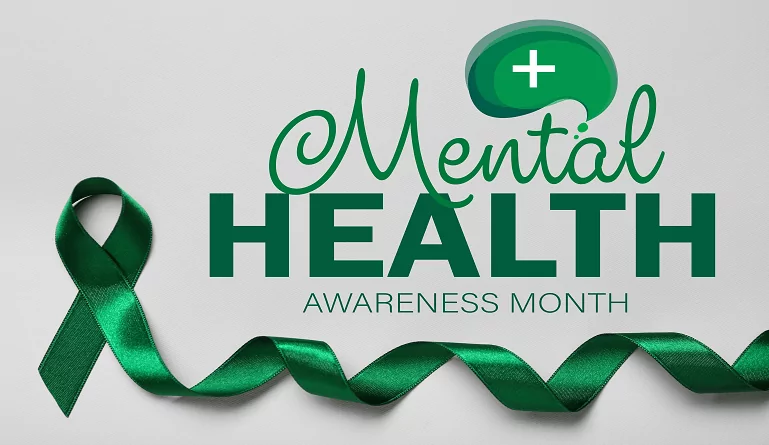Is upgrading HR tech part of your mental health plan in 2023? Read on to know the importance of HR technology today as we commemorate Mental Health Awareness Month in May.
HR Tech and Mental Health: An Important Synergy
You, as HR executives, are aware that employee happiness is a vital component of organizational success. The impact of mental health on employee well-being and productivity at work can’t be ignored.
2020’s survey by MIND discovered that 60% of adults in the United Kingdom confessed their mental health had gotten worse during the pandemic. In the second year of the pandemic, One-fifth of adults in the United States encountered considerable amounts of psychological distress. Mental health has a major impact on employee efficiency.
Anxiety and depression have a larger global effect – hurting the world’s economy by approximately $1 trillion yearly in productivity losses, according to a World Health Organization report. It is essential that employers recognize their responsibilities to their employees. Furthermore, technology has become vital for any workplace. It has enabled employees to stay engaged while preserving a semblance of normalcy during times of unprecedented change. When it comes to mental health, HR technology can play an outsized role in providing employees with the space, support, and guidance they need.
How Can HR Technology Help in Employee Mental Well-being?
There are several ways organizations can use HR technology to support mental health:
1. Employee engagement tools to maintain healthy social connections
A critical element of employee engagement is its influence on a person’s well-being. During financial crises like recessions and joblessness, when workers feel agitated and in dire need of support, the significance of employee engagement increases. By offering feedback and appreciation, HR technology may boost employee engagement. Using data analytics, you can also examine employee sentiment, resulting in enhanced, healthier work environments.
2. Diversity, equity, and inclusion (DEI) programs to support mental health for all
Currently, diversity, equity, and inclusion (DEI) programs are crucial for the success of any organization and for the greater good of the community – and our society as a whole. DEI programs contribute to the creation of a psychologically secure and dignified workplace for all employees, regardless of their origin or identity. By using HR technology to measure diversity metrics, you may detect possible prejudices, share digital training modules, and assess its effect on employee mental well-being. Additionally, HR technology can aid in addressing unconscious biases and microaggressions, ensuring that employees feel valued and respected.
3. Artificial intelligence (AI) for anytime support
Employers can incorporate artificial intelligence into their mental health toolkits, as it represents a significant advancement in the arena of mental health care. Consider the proliferation of AI chatbots such as Weobot, Tess, or Wysa. These chatbots can assist patients in managing their symptoms and practicing cognitive behavioral therapy (CBT) techniques as recommended by their clinicians. AI proved useful for clinicians, especially throughout the pandemic, and the advantages gained remain particularly important for remote workers.
4. Mobile benefits portals that help employees with chronic conditions
Long-term mental health conditions can be correctly ameliorated with the help of mobile HR technologies. Employers may utilize a tool that delivers daily reminders and advice to help employees stay on track. The tool would also function as a secure portal via which any individual with an active health insurance plan could communicate directly with a medical professional.
5. Predictive analytics to pre-empt and prevent mental health triggers
Predictive HR analytics is a helpful tool for anticipating and addressing possible mental health issues in the workplace. For instance, you can use predictive analytics to scrutinize employee data and identify probable mental health triggers such as excessive workload, difficult supervisors, and improper hours. Additionally, HR technology may encourage reskilling and upskilling to minimize the tension caused by job instability. With the assistance of these HR tools, employees feel more encouraged and supported.
Download – Whitepaper (Factors for Choosing the Best HR Technology)
Features of HR Technology that Makes it a Good Fit for Mental Health
Why is HR tech and mental health such a good fit? It comes down to three key characteristics that define HR tech:
- 24/7 access: By providing employees with access to resources around-the-clock, tech can make mental health support much more accessible. It can be particularly beneficial to staff members who operate remotely or have unconventional work hours. Given that mental health issues have no fixed time of cropping up, this is a major plus.
- The ability to be data-driven: Technology can monitor employee well-being while recognizing workplace psychological issue patterns. This can assist employers in developing strategies to overcome these roadblocks. HR tech dashboards also visualize this data in an easy-to-understand and actionable manner.
- Data masking and anonymity: HR technology can enable employees to request help or assistance discreetly. This can be especially helpful for those who dread the possible negative repercussions of disclosing their challenges. Workplaces that require anonymity for compliance, and cultures where open conversations around mental health are still rare.
HR Best Practices to Improve Mental Health Using Tech
Just installing HR technology is not enough. You also need to follow a set of best practices to ensure that employees make the best use of the mental wellbeing enablers available to them.
1. Train managers to take a closer look at attendance data
When a person’s mental health is in jeopardy, it is likely that their participation and availability at work will witness a steady drop, which is often an early warning sign that something is awry. Everyone experiences days when they cannot face the world. But if it turns into a regular occurrence among a few of the team, you must be cautious. Taking a closer look at employee attendance patterns allows you to have conversations with your employees to figure out the causes of their absences and launch supporting mechanisms.
2. Enforce mandatory breaks through time-tracking tools
It is essential for employees to unwind and rejuvenate. Encouraging employee rest, relaxation, and a sense of leisure can be essential to motivation as well as efficiency. Here, a modern time-monitoring app can be beneficial. Staff members can check in and out remotely. It is simpler to intervene if you observe a pattern in which individuals on the team frequently avoid breaks.
3. Offer paid time off during the holiday season
We are all aware of how difficult it may prove to organize staff vacations. It is essential, however, that your employees take time to recuperate and reconnect with their families. Make it simple for employees to request time off or PTO. Even if you’re still employing paper request forms, cutting-edge software can assist with administration and management. This method is more effective than manually managing queries and makes it simple for your staff to schedule breaks.
4. Get professional help, especially if you are a large organization
Using the assistance of a global PEO or professional employer organization is the simplest thing for businesses to do in the HR process. A PEO service may offer employees training that shows them how to assist colleagues in need. Recognizing an employee’s mental health issues is always difficult, and professionals must discuss this topic with them and, if necessary, offer support. In the early stages, honest interactions are essential for establishing and sustaining mutual assistance and a genuine comprehension of culture and values.
Conclusions: Watch Out for Common Mental Health Pitfalls in the Workplace
For Mental Health Awareness Month, companies should recognize the importance of this issue in the workplace – and in people’s lives today. The pandemic, geopolitical issues, recession fears, near-global inflation, and climate change have all contributed to a mental health crisis, which often impacts minority groups in a different way.
The ideas and best practices shared in this article can help you navigate mental health issues in the workplace using technology; but make sure to watch out for these pitfalls:
- Not prioritizing mental health in your HR strategy: Technology alone may not be sufficient to enhance mental health in the workplace. It is essential to resolve the root causes of these difficulties, like organizational culture or work-related stressors.
- Not investing in data security and privacy: This may raise security concerns regarding technology that monitors employee health. Employees shouldn’t feel that their personal information is being utilized against them, and companies must safeguard against a possible data breach.
- Not taking proactive accessibility measures: Despite the fact that technology can make tools, helplines, and other support mechanisms more accessible, it is essential that every worker has the same access to these sources. This pertains to those who lack access to tech or who are uncomfortable with its use.
For more actionable tips and insights, read our World Health Day guide on How to Use HR Tech to Promote Employee Wellbeing.





